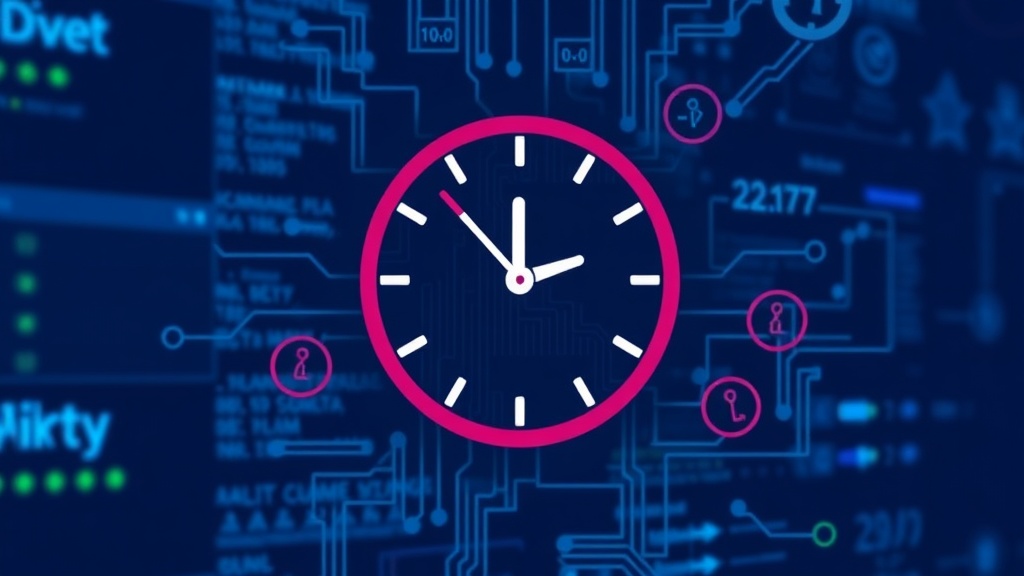Address
304 North Cardinal St.
Dorchester Center, MA 02124
Work Hours
Monday to Friday: 7AM - 7PM
Weekend: 10AM - 5PM
Address
304 North Cardinal St.
Dorchester Center, MA 02124
Work Hours
Monday to Friday: 7AM - 7PM
Weekend: 10AM - 5PM

There’s something unsettling about a security operations center at 3 AM, tired eyes locked on endless data streams, coffee cups everywhere, and the quiet hum of machines standing guard. Behind that hum is SIEM, a system that obsessively records every twitch and tremor on a network.
It’s the reason many companies avoid headlines about major breaches. With hundreds, sometimes thousands, of intrusion attempts daily, threats range from smash-and-grab hacks to patient, months-long infiltrations.
In today’s landscape, 24/7 vigilance isn’t optional, it’s survival. Here’s how SIEM works, why it matters, and what it means for anyone tasked with defending the digital front line.

Credit: pexels.com (Photo by Josh Sorenson)
Anyone who has watched a dim room of screens after midnight knows the quiet is not comfort, it is waiting. He sees the way a single alert cuts through that hush, like a short breath before a sprint. That is where reputations get kept intact.
Nobody wants to wake up to headlines about their company’s data breach. In fact, the global average cost of a breach reached $4.88 million in 2024, up 10% in just a year, and disrupted operations for 70% of affected organizations (1).
The reality is simple. Round the clock SIEM monitoring might save a company’s name, and probably a lot more.
Source: Prabh Nair
Security teams cannot afford to miss a beat. When something odd stirs at 3 AM, they need to hear it now, not later. A good SIEM watches everything, from odd login bursts to traffic spikes that do not line up with business hours.
It can sift tens of thousands of events per second, often 50,000 EPS or more, and still flag the one packet that smells wrong. Think about a workstation that tries to call a command server at 12.07 AM, two packets every 30 seconds, low and slow to stay quiet, the alert still lands.
It is like having eyes everywhere, all the time. Breaches leave breadcrumbs, small hints that look harmless on their own. But when those tiny pieces stack up across firewalls, servers, and endpoints, a picture forms.
Correlation across 8 or 12 sources turns noise into a timeline. A failed login in London at 01.12, the same user authenticating in Ohio at 01.15, then a file share accessed at 01.18, that story writes itself.
Attackers do not rely on simple tricks anymore, they wait and they test. They might sit for 30 to 90 days, mapping who clicks what and when.
Modern SIEM tools spot the weird, an admin account opening HR payroll files at 2 AM, a sales laptop talking to servers in a country where the company does not even ship, a single system beaconing every 900 seconds to an IP that changes with each query.
Waiting for something bad to happen is not a plan, it is a wish. With 24 by 7 monitoring, problems get caught early, often before harm lands.
When an alert trips, the response can kick in at once, blocking risky IPs, disabling a suspicious token, isolating a host from the network, or killing a malicious process in under 300 milliseconds.
Time matters. A lot. With round the clock eyes, teams can jump on issues right away, not Monday morning after a long weekend. Some shops cut mean time to detect from 12 hours to under 5 minutes, mean time to respond from days to under 30 minutes, which sounds bold but it holds if the playbooks are tight.
Nobody wants to wade through thousands of alerts by hand. Automation handles the routine, like blocking known bad addresses, resetting a single API key, or enriching an alert with threat intel before an analyst even opens it.
Well built playbooks trim alert volume by 40 to 70 percent, deduplicate clones, and escalate only what needs a human call. The result feels calmer, but faster at the same time.
He keeps noticing how time thins out during an incident, then snaps when the first alert lands, people breathe again. Faster detection plus automated playbooks means less harm; a 24×7 SIEM (always-on, not a pager roulette) pushes teams to act in minutes, not hours.
Containment under 15 minutes isn’t rare, sub‑10 happens on clean playbooks. That’s the difference between a wiped laptop and a wiped week, and the money talk follows fast. Which ties to the part no one likes to say out loud.
Network trouble burns cash, sometimes thousands per minute, sometimes more when orders stack. Orders stall, staff sits idle, overtime piles up. Boards remember the slow drip no one could plug at 2 a.m., how it lingered till lunch while customers refreshed status pages and got mad.
Leaders who’ve lived that week know the weight, they don’t forget. Strong monitoring especially when paired with a well-structured MSSP core services approach keeps lights on, I think it keeps people employed too.
Getting the Full Picture
Attackers slide sideways, that’s lateral movement, quiet until it’s not. A sane setup watches the obvious gear and the corners, the nooks where lazy habits live. His team picks and audits new products for MSSPs, gaps hide in plain sight, they always do.
Networks all talk at once, it sounds like a train yard, you need a conductor. The SIEM calms it with correlation rules, risk scores, and UEBA (behavior models). It learns a 14‑day baseline, then calls out odd moves, like 8 gigabytes in 4 minutes to a new country, or a jump from 0 to 600 failed MFA prompts before breakfast.
Most shops live half on‑prem, half in cloud, straddling both like it’s normal now. Watch both well. Track servers in the closet, workloads in AWS and Azure, and the SaaS that holds mail, docs, finance, and source code.
Modern attacks are getting pretty clever. Some take their sweet time, spreading out over months. Others come from people who already have the keys to the kingdom. But round the clock monitoring catches those little slip ups, like when someone’s accessing sensitive files at 3 AM on a Sunday.
Nobody likes paperwork, but somebody’s got to do it. The right monitoring setup handles most of the boring stuff automatically. When the auditors show up (and they always do), everything’s ready to go. No scrambling, no panic, just clean reports showing exactly what they need to see.

Credit: pexels.com (Photo by Josh Sorenson)
Security teams can’t just set it and forget it anymore. Round the clock SIEM monitoring brings way more to the table than just keeping the bad guys out.
Let’s face it , you can’t catch everything. But with non,stop monitoring, security teams can spot what really matters. It’s like having a radar that actually works.
Organizations using AI and automation reduced breach lifecycles by about one-third (nearly 108 days faster) and cut breach costs by around 33%, saving millions.
Security folks know there’s a difference between a real threat and background noise. Smart systems (running on correlation rules and some pretty sophisticated math) help teams figure out where to point their resources.
The IBM Cost of a Data Breach report found the global average cost of a breach was about $4.88M (2024) and that the average time to identify and contain a breach was measured in many months (IBM reported ~283 days for identification, containment in recent reports) (2).
The numbers don’t lie. When systems crunch through all that data , we’re talking terabytes here , patterns start showing up. Some security analysts might miss it, but the machines don’t.
With a bird’s eye view of what’s going down, teams can put their people where they need them most. No more wild goose chases.
Nobody wants to spend their day clicking through false alarms. That’s where automation comes in , and it’s about time.
Security teams get hammered with alerts , sometimes thousands per day. But with the right setup, they’re only looking at the ones that matter. It’s the difference between finding a needle in a haystack and having a metal detector.
When the machines handle the grunt work, the humans can do what they’re good at , thinking strategically. Security teams can actually prevent problems instead of just reacting to them.
Things move faster when you’re not stuck doing everything by hand. Response times drop from hours to minutes (sometimes even seconds).
Anyone who’s dealt with cybersecurity knows that when things go south, getting answers matters more than finger pointing. Round the clock monitoring isn’t just a fancy add-on , it’s like having a black box recorder for your entire network.
Think of it as TiVo for your network. When the CEO’s asking what happened to the database at 3 AM, you’ve got the replay ready to go. No more guessing games or “well, maybe” answers.
Waiting for attacks is so 2010. These days, security teams are digging through logs like detectives, finding weird patterns before they turn into problems. Some companies caught over 35% more threats just by actively looking instead of waiting.
Every hacker leaves breadcrumbs , some are just smaller than others. With enough data (we’re talking petabytes here), patterns start emerging from the noise. One finance company spotted a pattern in failed logins that turned out to be the early signs of a massive credential stuffing attack.
Nobody wants to be the person explaining why the system’s down. At $5,600 per minute (yeah, that’s the actual average cost), downtime isn’t just annoying , it’s expensive as hell. Early warning signs can mean the difference between a quick fix and an all,hands,on,deck crisis.
Finding problems early is like catching a cold before it turns into pneumonia. Security teams that spot issues within the first hour are spending about 70% less on cleanup compared to those who take days to notice.
Commerce doesn’t sleep, and neither should security. Good monitoring keeps things running smoothly , like traffic lights that actually work instead of everyone hoping for the best at intersections.
The average cost of a data breach hit $4.45 million in 2023. That’s not counting the months (or years) spent rebuilding customer trust. Just ask any company that’s been through it , the cleanup never really ends.
Nobody dreams of staring at security alerts all day, but it beats explaining to the board why customer credit cards are being sold online. One company’s 24/7 monitoring caught a ransomware attack mid deployment, saving them about $2 million in potential losses.
Security’s a lot like watching your house. Some folks peek through the windows once a day, others install cameras that never sleep. Most organizations still doing those occasional security sweeps might as well leave their digital front door wide open, there’s really no comparison between the two approaches.
The bad actors aren’t exactly scheduling their attacks between 9 and 5. They’re probing networks at 3 AM on a Sunday, or during holiday weekends when the office is empty. Maybe during the Super Bowl, just because they can.
Real time monitoring catches these guys in the act, while scheduled checks just show you where they’ve already been.
The numbers don’t lie, organizations switching to round the clock monitoring typically spot three times as many security incidents as they did before. That’s not just statistics, that’s actual threats getting caught before they turn into headlines.
It’s the difference between catching someone testing your locks and finding out they’ve been living in your basement for six months.
Yeah, continuous monitoring isn’t cheap, but neither is explaining to your board why customer data’s showing up on the dark web. Recent breach costs average around $4.5 million (according to IBM’s research), and that’s not counting the reputation damage. The math pretty much does itself.
Security teams don’t need more chaos in their lives. Good monitoring means they’re actually solving problems instead of constantly putting out fires. It’s like having a map instead of just wandering around hoping to bump into the right solution.
When auditors come knocking, continuous monitoring gets receipts. Every alert, every response, every resolution , it’s all there. No more trying to piece together what happened three months ago from memory and some hastily written notes.
Let’s be real , most IT teams are already juggling too many things. Bringing in managed SIEM services means getting eyes on the network 24/7 without having to hire an entire new department. It’s like having a whole extra security team without the headache of building one from scratch.
Working with a SOC means getting backup from people who’ve seen everything twice and wrote a book about it. They’re dealing with tomorrow’s attacks today, and they’re bringing all that knowledge to protect your network.
When the next big threat hits the news, you’ll probably find out from them first , and they’ll already have a plan to handle it.
When weird stuff pops up in system logs (and trust me, it always does), you’ll need someone who knows the difference between a developer’s late night coding session and a real threat. These teams spend their days staring at screens, picking up on patterns most people wouldn’t notice , kinda like digital detectives but with more coffee breaks.
Here’s the thing about security teams: they’re expensive as hell. We’re talking six,figure salaries, benefits, training, and that’s just for one person. Managed SIEM security offers the advantage of a whole team without needing to stock the break room or worry about vacation coverage.
Security threats move faster than gossip in a small town. What protected your systems last quarter might be about as useful as a screen door on a submarine now. The bad guys don’t sleep, and they’re pretty creative about finding new ways in.
Growing pains aren’t just for teenagers , companies feel them too. More employees mean more laptops, more access points, more everything. And each new thing needs protecting. It’s like trying to watch more kids at the pool , you need more lifeguards.
Every attempted break leaves clues behind. Some companies just clean up and move on, but that’s like throwing away the answer key before the test. Smart monitoring means taking notes, learning patterns, and getting better at spotting the next attempt before it happens.
Look, security isn’t exactly the most exciting thing to spend money on. It’s like insurance , nobody wants to pay for it, but everybody’s glad they have it when things go wrong. And things always go wrong eventually. That’s just math.
In today’s threat landscape, 24/7 SIEM monitoring isn’t just a “nice-to-have” , it’s a business necessity. The constant watch it provides means threats are caught in real time, compliance headaches are reduced, and incident response times shrink from days to minutes.
More importantly, it keeps operations running smoothly and protects both a company’s bottom line and its reputation.
Whether through in-house teams or managed SOC partnerships, continuous monitoring delivers a clear return on investment by preventing costly breaches, reducing downtime, and adapting to new threats as they emerge.
In the end, it’s about more than just technology , it’s about knowing your business is protected, every second of every day.
Talk to an expert to see how tailored consulting for MSSPs can help streamline operations, improve visibility, and align your security strategy with your business goals.
Security automation links real time security alerts with automated incident response, cutting incident response time and improving threat detection efficiency.
Scalable security monitoring adapts as networks grow, covering cloud and on-prem systems. With attack surface monitoring, continuous compliance checks, and security policy enforcement, it maintains security posture visibility and supports data breach prevention.
Security dashboard visualization turns log aggregation and security event correlation into actionable insights, speeding security incident triage and insider threat detection while enhancing proactive cyber defense.
Continuous vulnerability scanning and logging and alerting spot risks early, improving cybersecurity risk reduction, aiding threat hunting, and enabling faster incident containment.